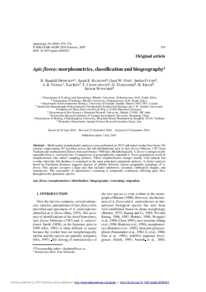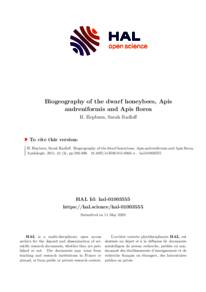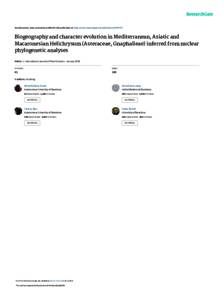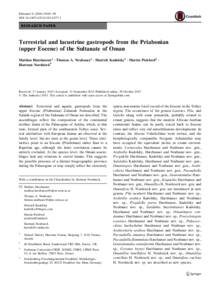Document
Apis florea : morphometrics, classification and biogeography.
Identifier
DOI: 10.1051/apido:2005023
Source
Apidologie. v. 36, 3, p. 359-376
Contributors
Radloff, Sarah E., Author
Otis, Gard W., Author
Fuchs, Stefan., Author
Verma, L. R., Author
Ken, Tan., Author
Chaiyawong, T. , Author
Tahmasebi, G., Author
Ebadi, R., Author
Wongsiri, Siriwat., Author
Country
France
City
Les Ulis
Publisher
INRA/DIB-AGIB/ EDP Sciences.
Gregorian
2005-07-01
Language
English
English abstract
Multivariate morphometric analyses were performed on 2923 individual worker bees from 184 colonies representing 103 localities across the full distributional area of Apis florea Fabricius 1787 from Vietnam and southeastern China to Iran and Oman (∼7000 km). Morphologically A. florea is unequivocally separable from A. andreniformis. Comparisons of geographically separated A. florea populations result in morphoclusters that reflect sampling artifacts. These morphoclusters change clinally with latitude but overlap when the full database is contained in the same principal component analysis. A cluster analysis based on Euclidean distances suggests degrees of affinity between various geographic groupings of A. florea. This species occupies a large area that includes rainforests, savannas, subtropical steppes, and semideserts. The seasonality of reproductive swarming is temporally continuous allowing gene flow throughout this panmictic species.
ISSN
0044-8435
Category
Journal articles




